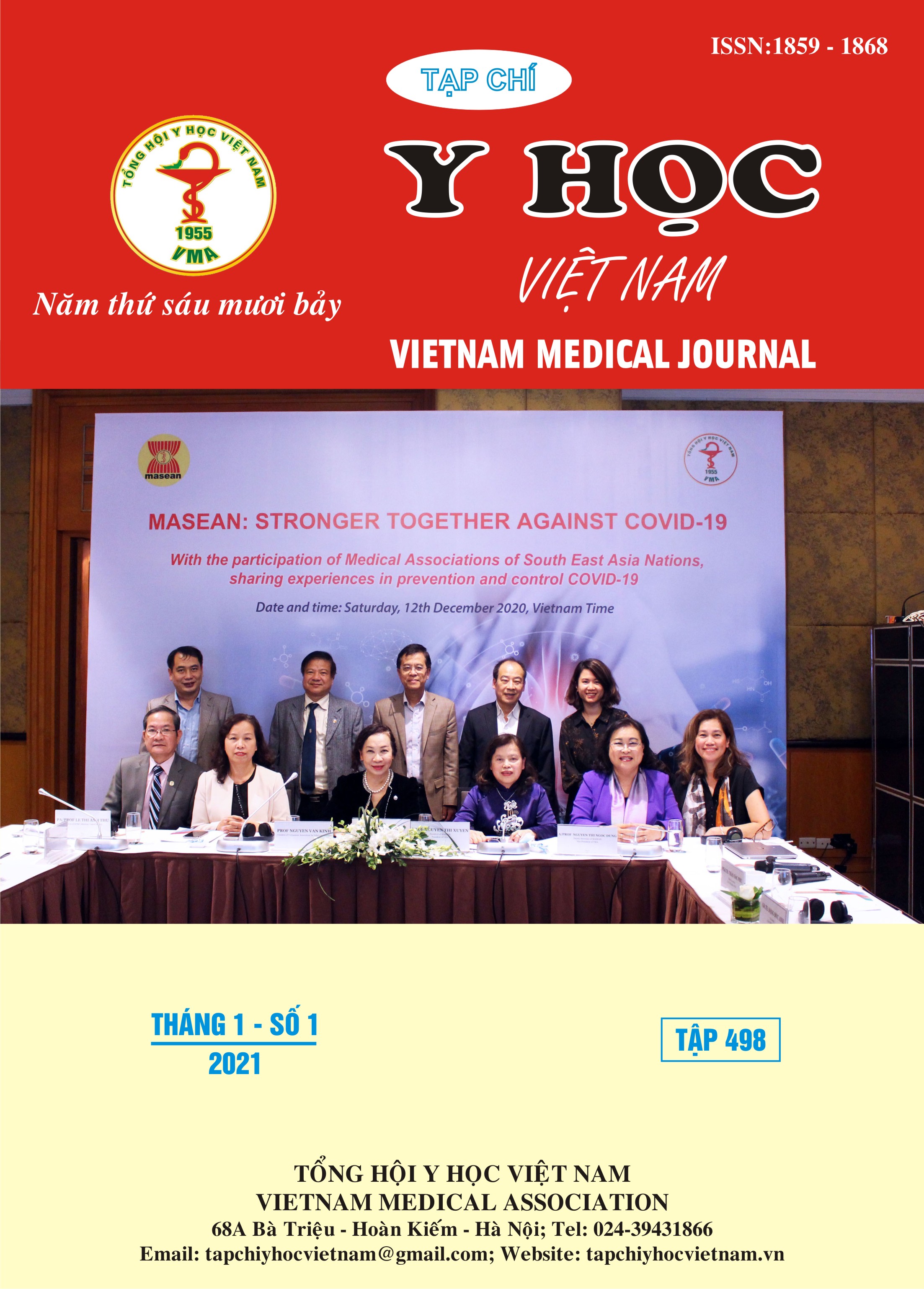CHARACTERISTIC OF BRONCHOSCOPY IMAGES AND MICROBIOLOGICAL CAUSES OF HOSPITAL ACQUIRED PNEUMONIA IN ICU DEPARTMENT FRIENDSHIP HOSPITAL
Main Article Content
Abstract
Objectives: Describe the characteristics of bronchoscopy images of mucosal lesions and bronchial secretions of patients with Hospital -AcquiredPneumonia (HAP) with ventilatior at the ICU Department - Huu Nghi Hospital. Characteristics Bacteria cause HAP and Status resistance to commonly used antibiotics of isolated bacteria. Methods: A cross-sectional studyof 39 ventilated patients at Huu Nghi hospital's ICU department, diagnosed HAP, with indications Bronchoscopy, bronchial fluid culture showed positive results and made Antibiotic Resistance. Result: A total of 39 ventilated patients qualified for diagnosis HAP, bronchoscopy images showed the characteristics of infiltrated mucosal lesions with the highest rate accounting for 48.2%, dilute sputum secretions and thick sputum, equivalent rates, the same 38%, the rest is bronchitis purulent inflammation. The results of bronchial fluids and antibiotic culture showed that the main cause was Gram-negative bacteria, accounting for 97%, of which the highest rate was Klebsiella pneumoniae with 41%, followed by Pseu. Aeruginosa ratio 36%. Gram-positive bacteria accounted for 3%, was opportunistic bacteria. Staphylococcus aureus was not found.Acinetobacter. Baumannii accounts for a lower proportion but more resistant to antibiotics. In common Gram-negative bacteria, the rate of resistance is very high to antibiotics of Cefalosphorin and Quinolone groups (> 70%), and lower resistance to Carbapenem, Piperacillin/Tazobactam and Cefoperazone/Sulbactam. Conclusion: Bronchial mucosal lesions and exudate properties are not correlated, but partly reflect the extent of lung damage, helping to change treatment attitude. The cause of HAP is mainly Gram-negative bacteria. Gram-negative bacteria are often highly resistant to many commonly used antibiotics, especially Quinolone and Cefalosphorin, and sensitive to Carbapenem, Piperacillin/Tazobactam and Cefoperazone/ Sulbactam
Article Details
Keywords
Bronchoscopy, Hospital – acquired pneumonia (HAP), Gram-negative bacteria, Gram-positive bacteria
References
2. Criner GJ, Eberhardt R, Fernandez-Bussy S, Gompelmann D, Maldonado F, Patel N, et al. Interventional Bronchoscopy. Am J Respir Crit Care Med. 2020;202(1):29-50.
3. Chawia R (2008). Epidemiology, etiology, and diagnosis of hospital –acquired pneumonia and ventilator-associated pneumonia in Asian countries.Am J Infect control.Vol.36, No.4.
4. Giang Thục Anh, Vũ Thế Hồng, Vũ Văn Đính (2002),” Tìm hiểu tình hình nhiễm khuẩn bệnh viện và tỷ lệ kháng kháng sinh tại khoa điều trị tích cực từ 1/2002 – 6/2002”, cơng trình NCKH BV Bạch mai, tập 1, tr 209-18.
5. Đoàn Ngọc Duy, Trần Văn Ngọc (2012), “ Đặc điểm viêm phổi bệnh viện do Pseudomonas aeruginosa tại BV Chợ Rẫy từ 6/2009 đến 6/2010”, Y Học TP. Hồ Chí Minh, Tập 16, Phụ bản của Số 1,tr 87 - 93.
6. Nguyễn Phú Hương Lan, Nguyễn Văn Vĩnh Châu, Đinh Nguyễn Huy Mẫn, Lê Thị Dưng, Nguyễn Thị Thu Yến (2012) "Khảo sát mức độ đề kháng kháng sinh của Acinetobacter và Pseudomonas phân lập tại Bệnh viện bệnh nhiệt đới năm 2010 ". Thời sự Y học, số 68, tr 9-12
7. Huỳnh Văn Ân (2012), Thực trạng sử dụng kháng sinh trong viêm phổi bệnh viện tại Khoa hồi sức tích cực BV Nhân Dân Gia Định, Hội thảo khoa học ngày 21/4/2012, TP. HCM.
8. Bùi Nghĩa Thịnh và cộng sự (2010), Khảo sát tình hình đề kháng KS của VK tại khoa Hồi sức tích cực và Chống Độc bệnh viện Cấp cứu Trưng Vương, Hồ Chí Minh.


